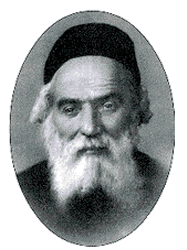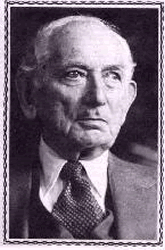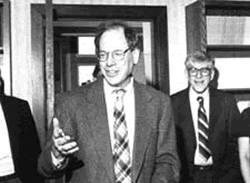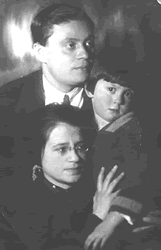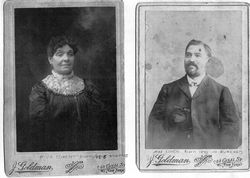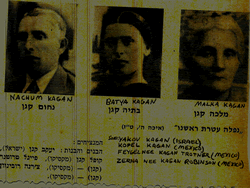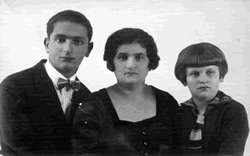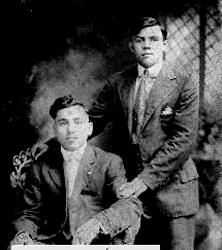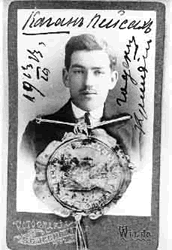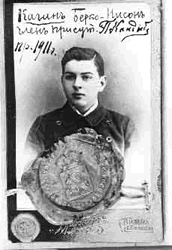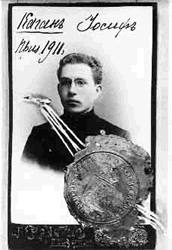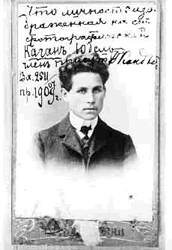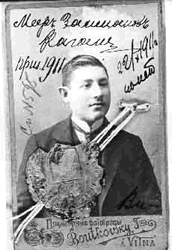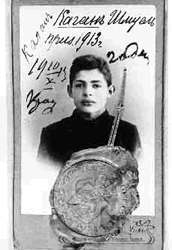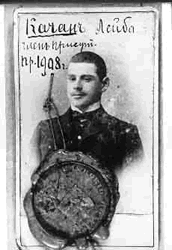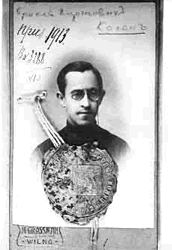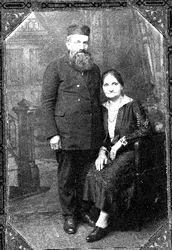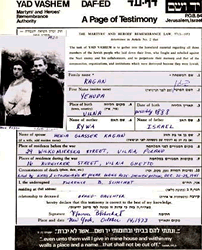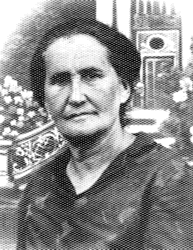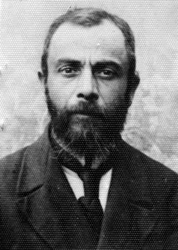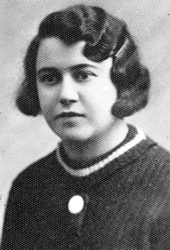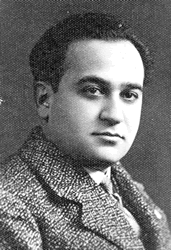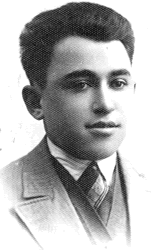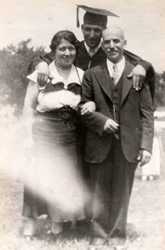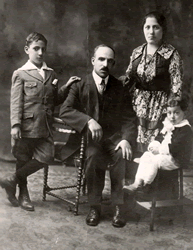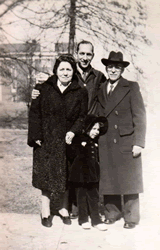(1838-1933) Rabbi Yisroel Meir HaKohen was one of the greatest figures in modern Jewish history. He was recognized as both an outstanding scholar and an extraordinarily righteous man. His impact on Judaism was phenomenal. It is interesting to note that, despite his great stature, he refused to accept any rabbinical position and supported himself from a small grocery run by his saintly wife in the town of Radin where they lived. Rabbi Yisroel Meir devoted himself to the study and teaching of Torah.
1892-1985
Born in czarist Russia to a wealthy family in a society that discriminated against him because he was a Jew. (The English cognate of Kagan is Cohen; there is no "h" in Russian.) He nevertheless received a full university education through a combination of innate intelligence, indomitable courage, and patient toil.He established himself in St. Petersburg as a member of the Socialist intelligentsia. It was there that he began his career as a publisher, mostly of scientific works, though he also published the works of writers and poets of the time. During the few months of the Kerensky government in 1917, after the Czar had been deposed and before the Bolsheviks under Lenin took over, he was actively engaged in politics as a member of the ruling Socialist (Menshevik) party. After several turbulent years he and a number of other intellectuals were expelled from the new Soviet Union and he made his way to Berlin with his wife and young son. Though without funds of his own, he was able, with the help of some relatives in Germany, to get on his feet financially and to become, in time, a publisher of books translated into Russian from other languages, mostly German. These works were distributed in the Soviet Union, freely though technically illegally.The son of Trotsky, the man who exiled him, came to him and asked him to publish Trotsky's autobiography. Dr. Kagan accepted the book for publication and had it circulated in the Soviet Union at a time when Trotsky himself was either already an exile or about to become one.His departure from St. Petersburg was the first of Dr. Kagan's escapes from violent death. He was in fact arrested before being deported and not a few of his associates were summarily shot during his final years in Petrograd, as it was then called.The rise of Hitler to power in Germany forced Dr. Kagan to decamp again, this time to Belgium and France. It was only after the fall of France that he, his wife and daughter left their new home once again, this time for the United States, via Casablanca.In New York Dr. Kagan had to start from scratch for the third time. It was here, for the first time, that chance threw in his way the opportunity to publish books in the field of psychoanalysis and it was in New York that his career as a publisher of psychoanalytic books and journals began.He chose the name of his new publishing house in imitation of the Parisian firm, Presses Universitaires. The name reflects the nature of his devotion to his work. Making money was never his chief aim. He wanted above all to publish works that would enrich the culture of the society in which he lived and that would bring credit to his firm and to himself. He was a scholar whose intellectual and cultural interests took precedence over business interests. He was a charming and interesting social companion, one with whom it was always a pleasure to talk.
Charles Brenner
Robert A. Kagan
Professor of Law and Political Science Jurisprudence and Social Policy Program Boalt Hall School of Law,University of California, Berkeley
#kgn-18:
Yehuda Kagan
http://www1.yadvashem.org/stories/kagan/index_c.htm
This is the Page of Testimony for Yehuda Kagan. Yehuda was born in 1888 in Vilna, Poland. He and his wife Henia (nee Glasser) had, as far as we know, two children. During the war Yehuda was in the Vilna Ghetto. Together with his wife, Yehuda was murdered by the Nazis at the Ponary forest in 1941. His son Israel was also murdered during the Holocaust.
This Page of Testimony was submitted by Yehuda's granddaughter Florence Shochat (Levin) in 1973.
#kgn-19:
Esther Kagan nee Finkel was born in Rakow, Poland to Shalom and Tzvia. She was a housewife. Prior to WWII she lived in Kurzeniec, Poland.
Esther was murdered in the Shoah.
This information is based on a Page of Testimony submitted by her daughter, Tzvia Even Shoshan
#kgn-20:
Rafael Kagan (1882- 1942) was a cantor and a shochet in Kurenets. He perished in the holocaust
#kgn-21:
Shoshana Kagan was born in Korzeniec, Poland in 1912 to Rafael and Gitel. She was a bookeeper and single. Prior to WWII she lived in Korzeniec, Poland.
Shoshana was murdered in the Shoah.
This information is based on a Page of Testimony submitted by her sister, Tzvia Even Shoshan
#kgn-22:
Abram Kagan was born in Lebadove, in 1906 to Rafael and Gitel. He was a hebrew teacher and single. Prior to WWII he lived in Kurnik, Poland.
Abram was murdered in the Shoah.
This information is based on a Page of Testimony submitted by his sister, Tzvia Even Shoshan
#kgn-23:
Joseph Kagan was born in Kurzeniec, Poland in 1910 to Rafael and Gitel. He was a bookeeper and single. Prior to WWII he lived in Kurzeniec, Poland. During the war he was in Kurzeniec, Poland.
Joseph was murdered in the Shoah.
This information is based on a Page of Testimony (displayed here) submitted by his sister, Tzvia Even Shoshan
Rabbi Israel Meir Kagan,
The Chofetz Chaim
(1838-1933) For almost one hundred years he lit up our world. His
was a soul from on high whose only desire in life was to fulfill the wish
of his Creator through lifting the worth of individual lives as well as
the life of the Jewish people as a whole. This was the substance
of the marvelous life of this giant of justice and kindness.
He could find no peace when contemplating the state of the nation
regarding the grave sin of slander, until he composed his first work which
carried the name with which he has been identified ever since: Chofetz
Chaim... He also was inspired to produce a work, Ahavas Chesed (Love of
Kindness) detailing the laws between man and man.
The emigration to America made him fearful for the well-being of Judaism
in places where Jewish settlements were not well organized. He recognized
the trials of the new immigrants and to fill their needs he wrote Nidchei
Yisrael, (Dispersed of Israel), replete with detailed laws specifically
related to the new life of the émigrés and heartfelt words
of inspiration and encouragement to strengthen them in overcoming obstacles
and preserving their Judaism. And his caring eye observed the young
conscripts forced to live far from any semblance of Jewish life and desperately
in need of special guidance. For them he composed Machne Yisrael,
(The Camp of Israel).
In spite of all the writings of his predecessors he found that he must
clarify many laws of the first portion of the Shulchan
Aruch, and composed his famous Mishna Brura, which is firmly established
as an authoritative source.
And within his heart there burned a holy fire: the hope for the full salvation.
The final redemption of Israel was his constant concern. For the
arrival of that event the laws of Kodshim must be clear. But he
saw that such learning was much neglected and so composed a monumental
work on the order Kodshim, Likkutei Halachos.
In spite of all these undertakings he was totally involved in all matters
of Torah support with youthful enthusiasm even when he was well into his
nineties, traveling to anywhere he might help to strengthen activities
on behalf of Torah.
This is but a too-brief overview of the life of an extraordinary man whose
saintly presence we were fortunate to encounter and from whose saintly
life and pure character we were privileged to feel the impact.
(Excerpts from an article by Rabbi Avrohom Yitzchak Kook which appeared
in the journal HaHaid. Translated by Matis Greenblatt for Fall 1983
issue of Jewish Action Magazine).
